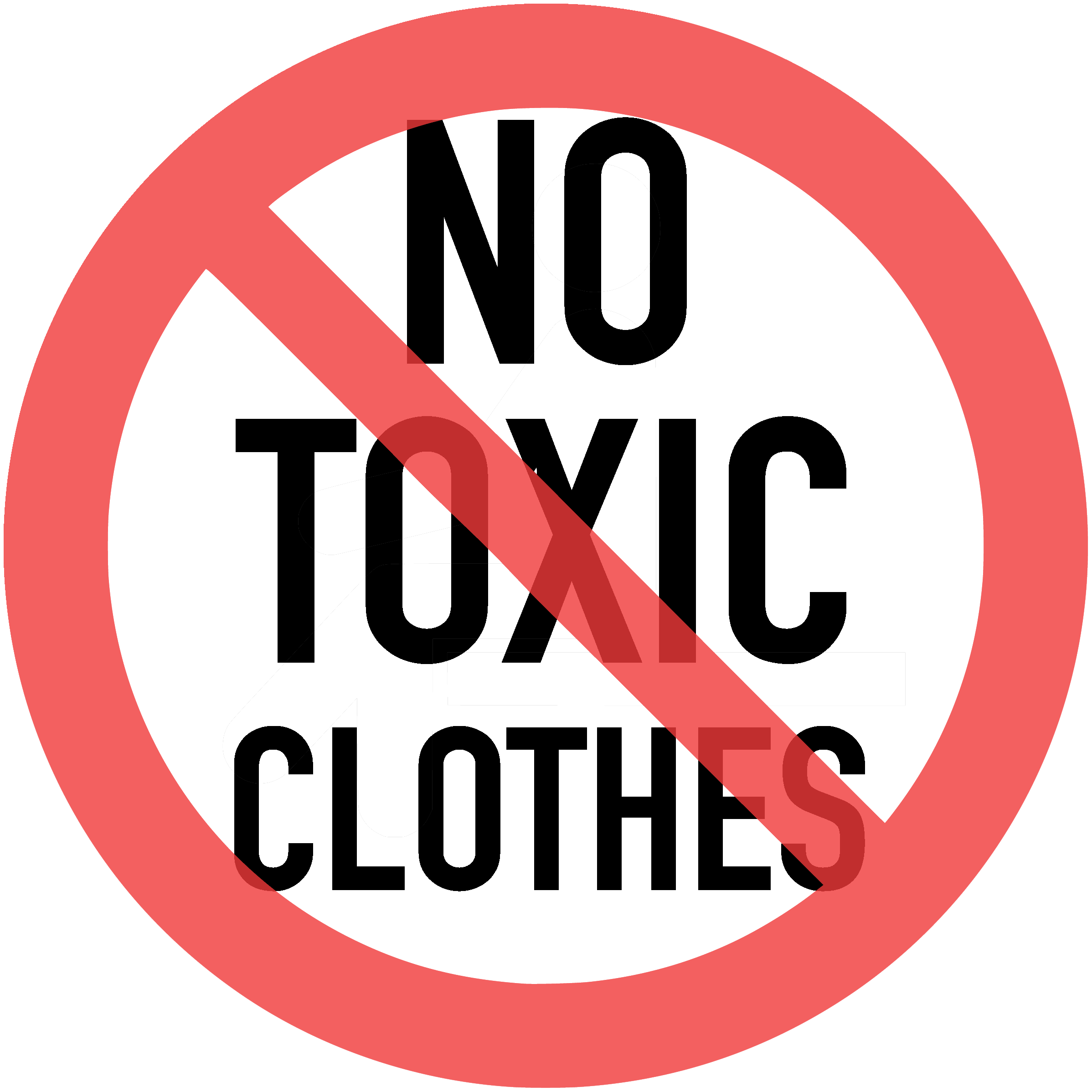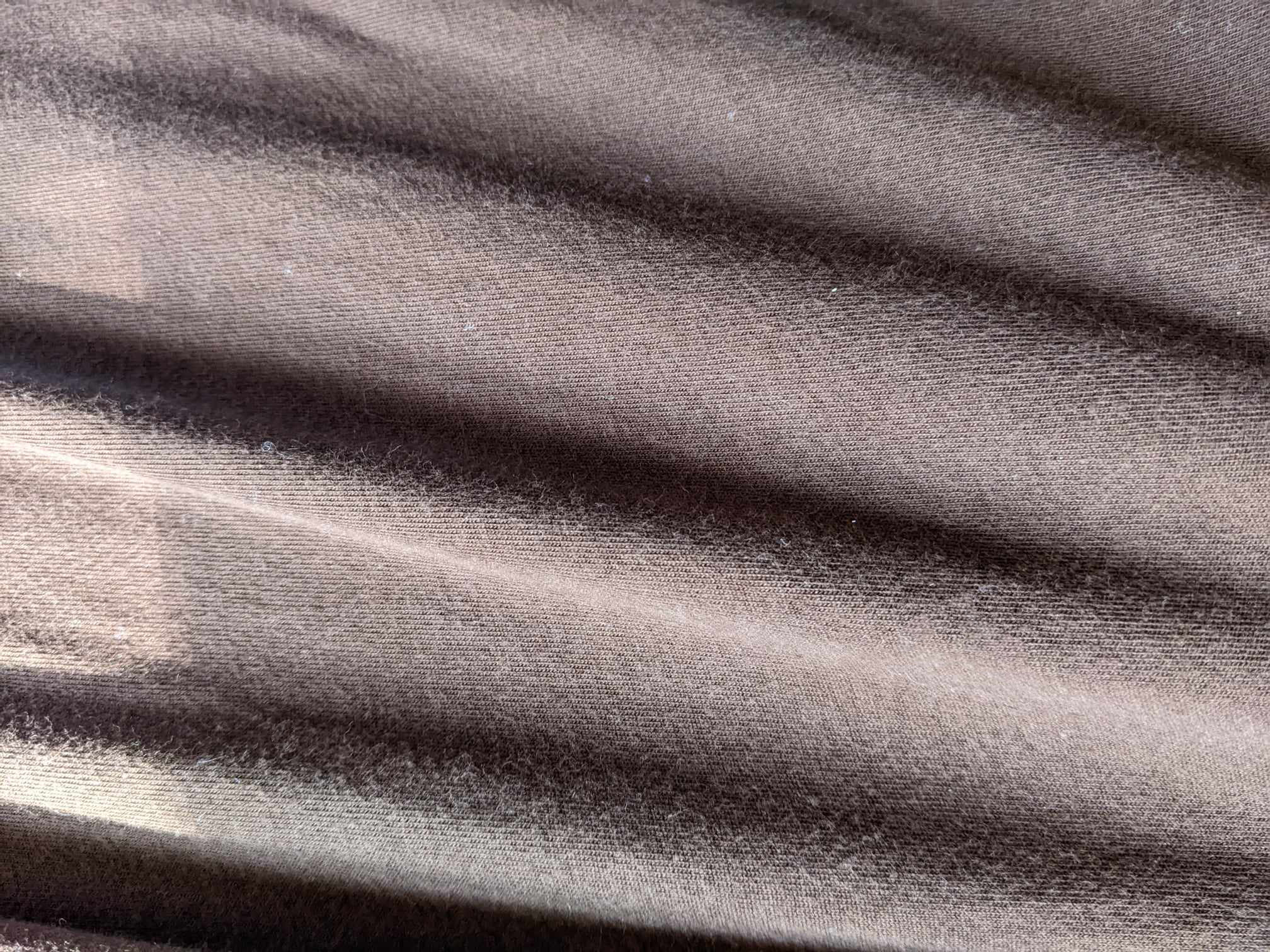Almost every stretchy fabric has spandex in it. Bad idea.
Spandex, Elastane, Lycra
Spandex is a synthetic, petroleum-based fiber, also called elastane, and sometimes trademarked as Lycra. The word “spandex” is an anagram of “expands.” The word “elastane” comes from “elastic urethane.”
Spandex is made from at least 85% polyurethane, sourced from nonrenewable crude oil or natural gas. The production process is energy-intensive and polluting. Spandex cannot be recycled, and it sheds microplastics from your washing machine into rivers, oceans, and marine animals and plants.
“Whether you call it elastane or spandex, both fabrics are created by polymerizing a mixture of macroglycol and a diisocyanate. After the prepolymer process, the resulting solution is reacted with a diamine, which extends the polymer chain, creating polyurethane. The solution is then pushed through a spinneret to create fibers, which are treated to set their properties.” — Sustainable Review
Polyurethane can stretch up to 700%, so adding small amounts of it to other fabrics can add a comfortable amount of stretch. Except the spandex is not comfortable at all on your skin.
“Spandex is a synthetic fiber made of at least 85% of the polymer polyurethane. Spandex is made from several chemicals that are known sensitizers. TDI and MDI (Toluene-2,4-diisocyanate; Methylene bisphenyl-4,4-diiisocyanate) are precursors of the polyurethane used to make spandex. TDI, a toxic chemical, has proved carcinogenic and can cause severe dermatitis. MDI is also toxic…. [Some] cases of dermatitis to spandex have been traced to rubber or rubber-processing chemicals added to spandex.” — Donald F. Groce, Analytical Chemist
Spandex tends to stick to your body and doesn’t let your skin breathe naturally. And like other synthetics, it quickly becomes smelly with perspiration. Manufacturers sometimes coat the fabric with additional chemicals to prevent that. As for sleeping in spandex-containing garments:
“Synthetic fabrics like spandex, polyester, or nylon … ‘trap’ body heat and moisture, making it very easy to overheat while snoozing and wake up in a pile of sweat. Dora Kramer, M.D., the CEO of Siestio, [says] that there’s no excuse for having polyester or any other synthetic variety anywhere near your body or bed at the end of the day. Besides just hampering your body’s ability to ‘breathe,’ Dr. Kramer says synthetic clothes at bedtime have been linked to rashes, itching, dermatitis, and even a lowered sperm count in men.” — John Anderer, Eat This, Not That!
When spandex traps moisture next to your skin, the toxic raw materials and toxic processing chemicals in the fabric and its dyes, such as formaldehyde, have an easier time penetrating your skin and also causing allergic reactions.
In the same way, spandex encourages the growth of bacterial and fungal infections, including yeast infections for women wearing underwear that contains spandex.
The Truth About “100% Cotton” & Spandex
When you see garments touted as “100% cotton,” or “100% organic cotton,” or “100% linen,” etc., if they’re stretchy, be suspicious. Read the fine print, and you’ll often find these clothes are something like 97% cotton and 3% spandex. The manufacturers want you to ignore the spandex, pretend it doesn’t matter, or at least shrug and accept it as a fact of life. It’s tough/expensive for them to give you the clothing and fashions you want, without using spandex.
But still, the truth is that having even 3% spandex against your skin all day is not acceptable. People wonder why so many of us suffer from chronic illnesses and auto-immune illnesses and cancers — don’t look now, but most people are absorbing poison through their skin 24/7.
It’s possible to get stretch in fabrics without spandex, using “mechanical stretch” textiles — knitted-yarn fabrics like jersey and rib-knits. Some of these have quite a bit of stretch, and while they may not recover their shape right away like spandex does, they should regain their shape after washing and drying. Bias-cut design can also add natural stretch to garments.
Another alternative to spandex is lyocell fabric, such as TENCEL, made sustainably from eucalyptus and beechwood trees from managed forests, using a closed-loop system with non-toxic processing. It’s friendly to your health, as well as being quite stretchy, with excellent recovery. Since it’s expensive, you won’t see most manufacturers using it, though.
Whenever we can, we include these good stretchy options on Feel Good Mercantile. None of the clothing we offer has spandex in the fabric. The only spandex you’ll see on the site is when it’s enclosed in waistbands or other casings. Not ideal, but acceptable for most people, and the reality right now.

